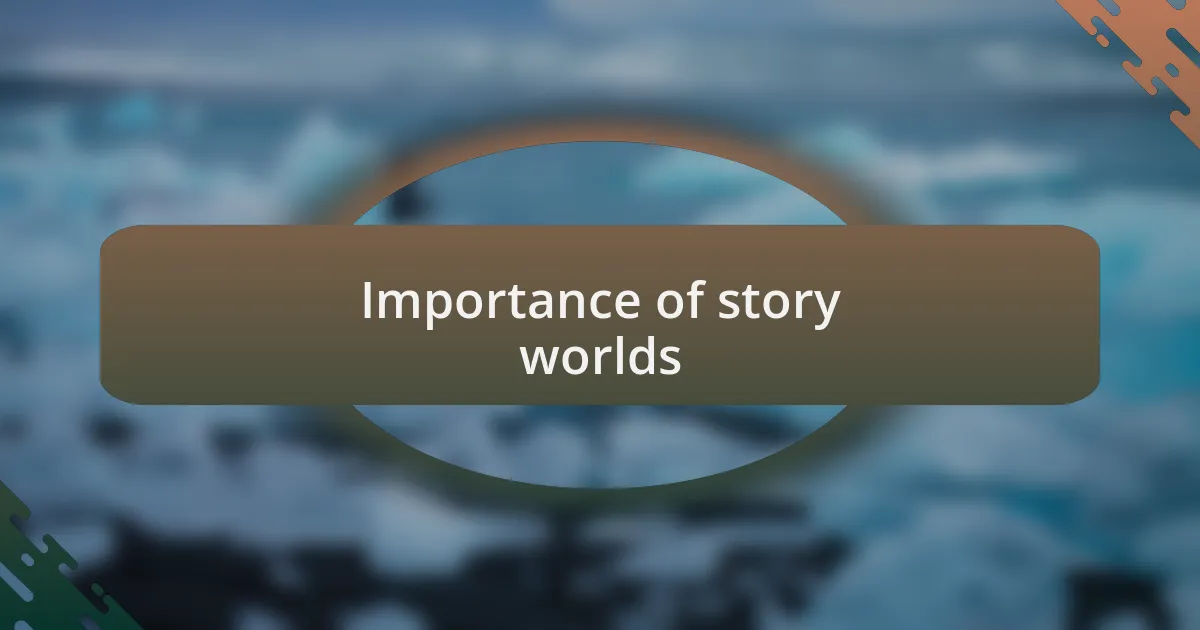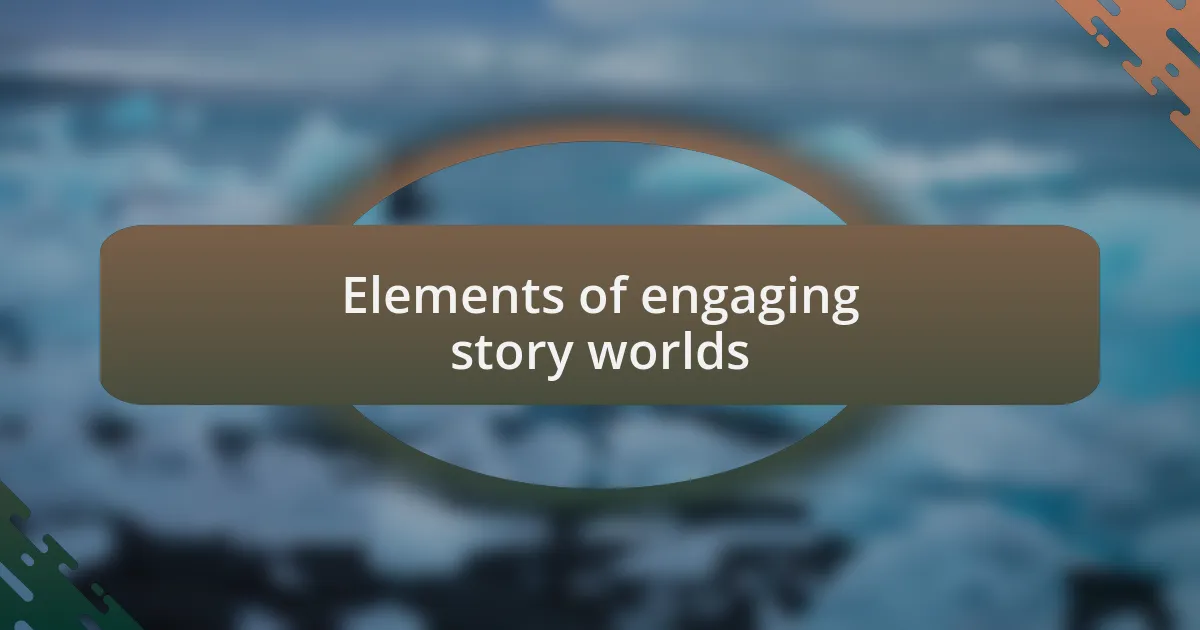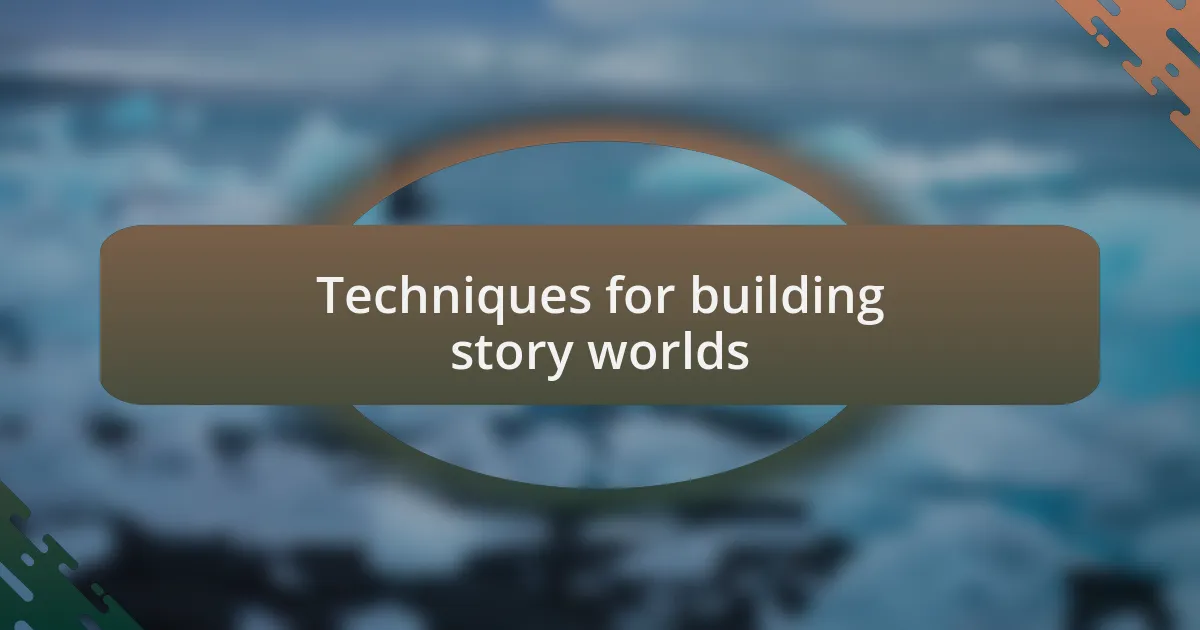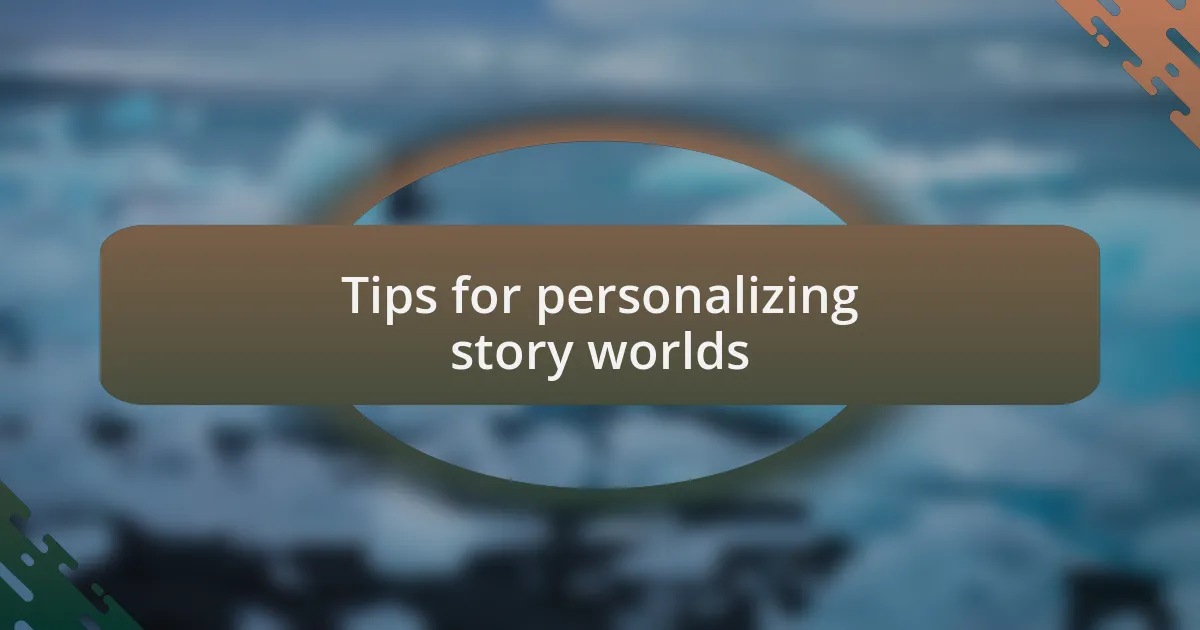Key takeaways:
- Children use storytelling as a way to express emotions and process their experiences, blending reality with imagination.
- Immersive story worlds provide children a safe space to explore complex emotions and enhance their creativity.
- Dynamic characters, sensory details, and engaging conflicts are essential elements that enrich children’s narratives and foster emotional understanding.
- Personal connections and unique perspectives in storytelling can transform familiar settings into imaginative landscapes, making stories more relatable and profound.

Understanding kids storytelling
When I think about kids storytelling, I remember how my cousin, at just five years old, would transform her living room into an entire universe complete with her stuffed animals as characters. It was fascinating to see how she included elements from her day-to-day life and spun them into adventurous tales. This ability to blend reality with imagination is crucial; it showcases how kids engage with storytelling beyond mere entertainment, allowing them to express their emotions and understand their world.
There’s something truly magical about how children intuitively grasp the structure of a story. They might not know the terms “beginning,” “middle,” and “end,” but they instinctively seek resolution in their narratives. I often wonder if their innate curiosity drives them to construct environments filled with conflict and surprise, helping them make sense of their feelings and experiences.
As I engage with kids through storytelling, I notice that they often draw upon their fears and triumphs. I once heard a child weave a tale about overcoming a dark monster that lived under the bed, which mirrored their own anxieties about nighttime. It’s a reminder that storytelling for children is not just about fantastical plots—it’s a powerful tool for processing what they feel and encounter in life.

Importance of story worlds
Creating immersive story worlds is incredibly important in kids storytelling. I recall a time when my nephew crafted a narrative about a brave little astronaut exploring a galaxy made entirely of candy planets. His enthusiasm transformed that made-up world into a tangible place for him, allowing him to express creativity while also confronting the feelings of adventure and fear that come with venturing into the unknown.
A story world can serve as a safe haven for children, offering them the opportunity to explore complex emotions and life situations. For instance, I once worked with a group of children who designed a magical forest inhabited by friendly creatures. This setting provided a comfortable backdrop for them to talk about friendship and bravery. Why do you think children gravitate toward creating these fantastical realms? In my experience, it gives them a sense of control and understanding in a world that can often feel overwhelming.
Moreover, the details within a story world—from the sights to the sounds—can ignite a child’s imagination and deepen their connection to the narrative. I remember my niece describing the shimmering rivers and fragrant flowers in her story about a fairy kingdom. As she illustrated these elements, I could see her engaging more deeply with the emotions tied to her characters, revealing insights about her own aspirations and fears. Isn’t it fascinating how much richness can come from these fictional realms?

Elements of engaging story worlds
When it comes to building engaging story worlds, vivid sensory details are essential. For instance, I once helped a child create a desert oasis complete with shimmering sands and a sky that shifted from deep blue to fiery orange during sunset. The way he described the warmth of the sun on his face made that oasis feel almost real to me. Have you ever noticed how sensory experiences can transport us? They make a story world lively and relatable, allowing young storytellers to navigate their narratives more effortlessly.
I find that dynamic characters are also key elements in captivating story worlds. In a recent project, a young girl imagined a kingdom where each character represented different emotions—like Joy, Sadness, and Anger—living in harmony. This approach not only made her story more interesting but also sparked conversations about her own feelings. How cool is it when kids can see themselves in their creations? It gives them the chance to understand their emotions while inviting others to empathize with struggles and triumphs they might face in real life.
Furthermore, an intriguing conflict can rev up the excitement in any story world. I remember a boy who developed a scenario where a clever young dragon had to outsmart a bumbling knight. His vibrant portrayal of their playful rivalry kept everyone eager to hear what would happen next. Isn’t it amazing how conflict shapes not just the plot, but also children’s ability to problem-solve? Through these challenges, kids learn resilience while diving deep into their imaginative landscapes.

Techniques for building story worlds
Creating a robust story world often starts with layering rich backstories and histories. I recall guiding a young boy who built a world where ancient legends shaped the lives of its inhabitants. He illustrated how the moonlight held secrets from the past, which not only hooked my attention but also encouraged him to think about how history influences our present actions. Hasn’t every child ever pondered about their own family stories? By weaving personal histories into their narratives, kids can create deeper connections to their fictional worlds.
One effective technique I’ve discovered is encouraging kids to sketch out maps of their worlds. I often work with budding storytellers who layout everything from mountains to rivers, marking adventure spots along the way. One girl crafted a treasure map that mapped out her pirate-infested isle, each landmark representing a crucial moment in her journey. It’s fascinating how visual aids can transform abstract ideas into tangible elements—don’t you think a child’s imagination expands when they see their world represented visually?
Another impactful approach involves incorporating dialogue that reflects the culture of the story world. I remember a charming group of kids who created a village where the characters greeted each other with songs instead of words. This unique communication method not only made their story entertaining but also encouraged lively discussions about friendship and community. Isn’t it incredible how dialogue can unveil the soul of a story world, allowing young storytellers to express their unique perspectives?

My favorite story world examples
When exploring my favorite story worlds, I can’t help but be drawn to those that offer a unique twist on familiar settings. One that stands out is a world where time flows differently. I once collaborated with a talented young storyteller whose characters aged quickly in one realm but remained children in another. This contrast not only created fascinating dynamics in their relationships but also sparked discussions on how perspective can change over time. Have you ever thought about how our own experiences shape our views?
Another example that really captures my heart is a world inhabited by sentient trees, each with its own personality and backstory. I remember working with a group that brought this idea to life during a workshop. They detailed the trials and triumphs of a wise old oak who served as the village elder. The emotional depth they infused into the trees made me reflect on the wisdom of nature. Isn’t it amazing how children can tap into such profound themes through their imaginative landscapes?
In the realm of fairy tales, I hold a special place for a world where the seasons dictate the storyline. A bright-eyed girl I mentored imagined a village that could only blossom during spring but faced challenges in winter. The way she intertwined seasonal changes with the characters’ emotions was not only captivating but also stirred nostalgia about how seasons affect our own lives. Doesn’t it make you reconsider how nature’s rhythm plays a role in our personal stories?

Tips for personalizing story worlds
When personalizing story worlds, I often advise young storytellers to draw inspiration from their own lives. For instance, I once encouraged a young author to weave in the sights and sounds of their neighborhood. They recreated a bustling city park right down to the sweet scent of blooming flowers and the laughter of children playing. This made the story feel relatable and alive, reminding me of how rich our surroundings can be as a source of creativity.
A powerful technique I appreciate is character-driven world-building. I recall working with a budding storyteller who based her main character on her grandmother, a woman with a passion for gardening. The lush gardens in her story were more than just a backdrop; they became a symbol of love and growth. By embedding personal elements into the setting, the story earned a warmth that resonated with anyone who has cherished a family connection.
Another engaging approach is to ask yourself how specific locations impact the emotional tone of the story. I remember a workshop where a participant transformed an average school into a magical academy with hidden passageways and enchanted classrooms. This reimagining allowed the storyteller to explore themes of friendship and discovery in a way that made me think about my own school experiences. Isn’t it intriguing how a simple change in perspective can breathe new life into familiar places?